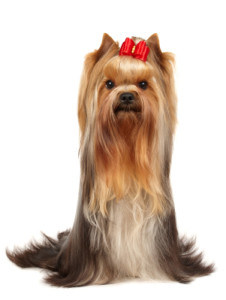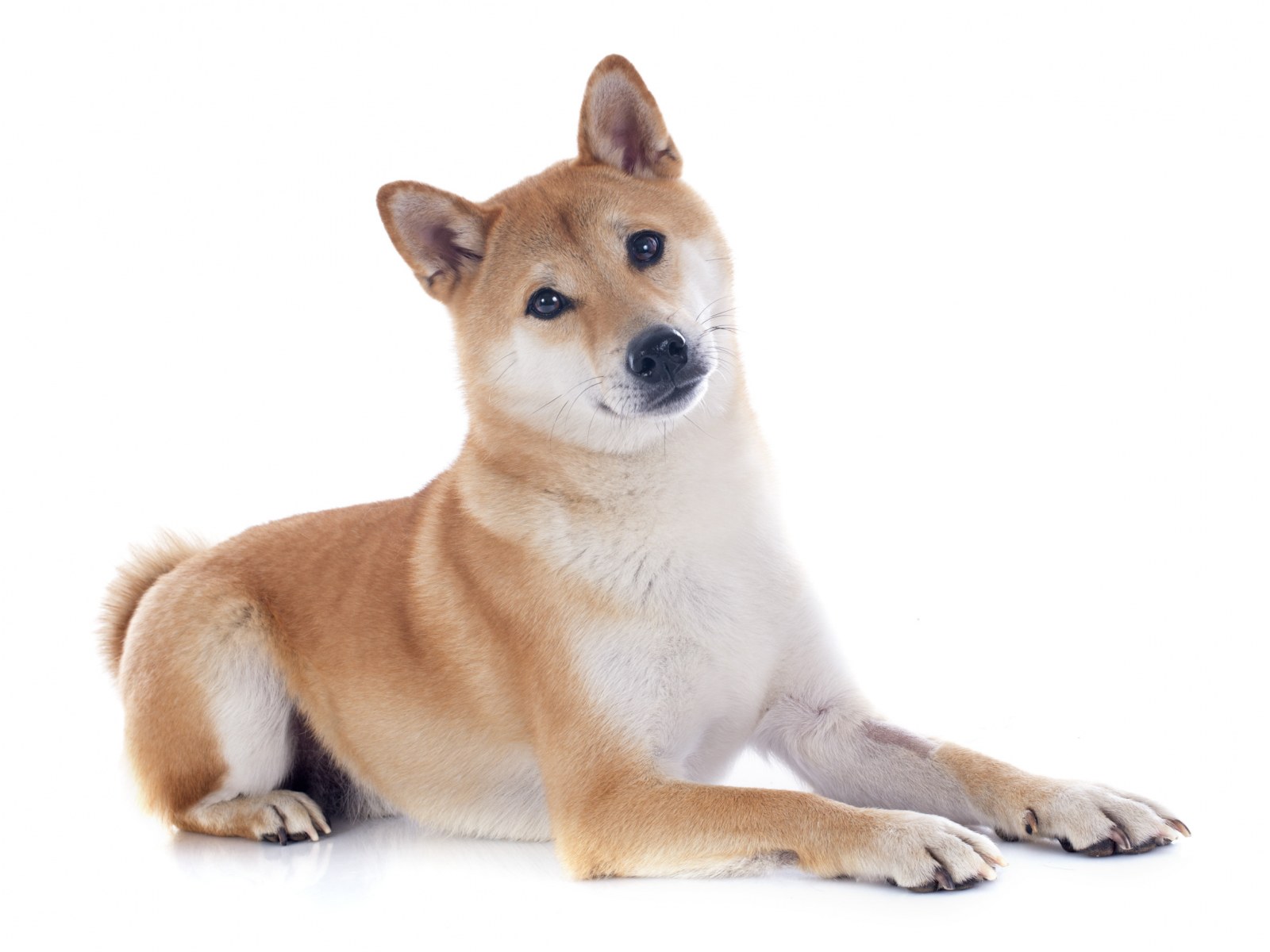- Maintain good health. Systemic health problems can adversely affect your Yorkshire’s skin, which is his largest organ, and, in turn, his coat. In
 some cases of generalized illness, hair growth is slowed or stopped as the body’s resources are focused elsewhere. The hair enters a dormant phase in which it is more easily shed, which is one reason sick dogs tend to shed more. New hair may be slow to come, and when it does, the hair cuticle may be abnormal, resulting in a dull, dry coat. If your dog’s coat suddenly becomes sparse or brittle, it may be a sign that a checkup is needed.
some cases of generalized illness, hair growth is slowed or stopped as the body’s resources are focused elsewhere. The hair enters a dormant phase in which it is more easily shed, which is one reason sick dogs tend to shed more. New hair may be slow to come, and when it does, the hair cuticle may be abnormal, resulting in a dull, dry coat. If your dog’s coat suddenly becomes sparse or brittle, it may be a sign that a checkup is needed. - Provide good nutrition. Hair is made up of about 95 percent protein. All told, if you added up how much hair grows from an average dog’s follicles, it would amount to about 100 feet of hair a day! That hair, plus the constant replacement of skin cells, uses about 25 to 30 percent of a dog’s daily protein requirement. If your dog’s diet lacks protein, it’s going to show up in poor hair growth and poor-quality hair that is rough, brittle, and easily broken. Hair also requires essential fatty acids, vitamin B complex, vitamin C, vitamin E, and minerals such as zinc, among others. You can buy several supplements specially formulated to include nutrients helpful to coat growth. Overall, your best bet is to feed a well-balanced diet with fairly high protein that includes omega fatty acids and vitamins B, C, E, A, and K. If you change foods, keep an eye on your dog’s coat and if it starts to look poor, find another food, or see your veterinarian.
- Eradicate parasites. Internal parasites can destroy all your efforts at good nutrition. External parasites can cause hair loss through itching that leads to scratching and chewing. Fleas can also cause fleabite dermatitis, in which the flea’s saliva creates a widespread allergic reaction and itching. Mites can invade hair follicles and cause the hairs to fall out.
- Comb daily. Little snarls become big tangles, which become solid mats. It’s almost impossible to remove mats without losing hair. It’s especially important to comb after nature walks, or if your Yorkshire has a yard with lots of greenery, because small twigs and burrs tend to get hair wrapped around them, causing instant tangles. Use a pin brush or a wide-toothed comb. If you use a pin brush, don’t use the type with little balls at the end of each pin, as these can pull the coat. Do not use a nylon, natural-bristle, or slicker brush. Mist the coat with coat conditioner before combing, and use a steel comb to gently work through the hair.
- Bathe often. As oil accumulates down the hair shaft, it attracts dirt, and the combination changes the hair texture so that it tends to cling, tangle, and mat. If you really want a show-dog coat, plan to bathe your dog at least once a week.
- Spot-bathe problem areas. Organic materials such as food, blood, and feces will rot, and if these materials are clinging to your dog’s hair, they will rot the hair along with them. Other body products, such as saliva, urine, and eye discharge, may be acidic or contain enzymes that break down hair. Rather than bathe the entire dog, use a rinse-free shampoo to keep these areas clean, or do a quick spot-bath.
- Avoid excessive heat. If you’re blow-drying, use the lowest heat setting possible. Better yet, invest in a forced-air dryer, which uses cool air blown at high speed to dry.
- Avoid abrasive surfaces. It makes sense that letting your Yorkshire run through thickets and thorns is a surefire way to destroy his coat, but you may not think about things inside your house. You really do have an excuse to use satin sheets; slick surfaces are the least harmful for long, delicate hair. Even carpeting can be damaging to Yorkshire coats.
- Use protective wraps. Wrap small sections of coat in wax or rice paper, fold it up, and band it. Wrapping keeps the coat from dragging on the ground or getting tangled.
- Don’t leave clothes on. Don’t leave collars, harnesses, or cute outfits on your dog more than necessary. They can rub against the hair and break it.
Ten Steps To Growing A Long Coat For Yorkshires was last modified: May 23rd, 2016 by zsoltm1778

